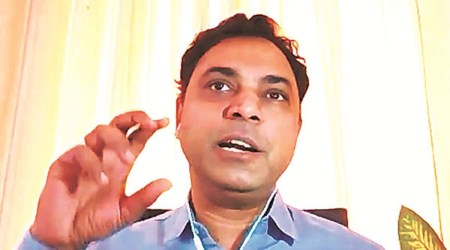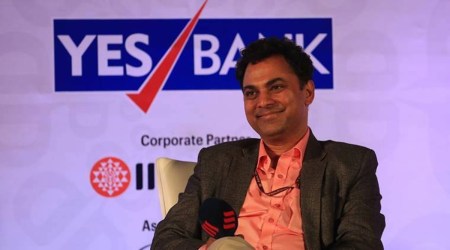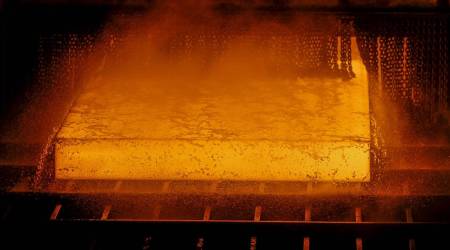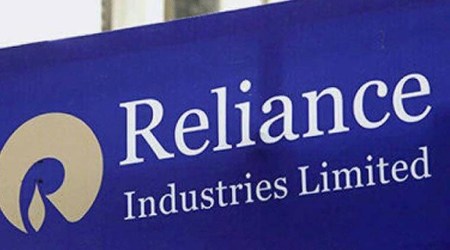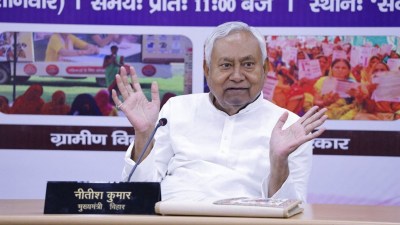ECONOMY NEWS - Page 106
To assess equity, Economic Survey introduces a bare necessities indexSubscriber Only
The Survey has underlined the need to focus on reducing variations in the access to bare necessities across states, between rural and urban areas, and between income groups.
GDP growth rate for FY20 revised downwards to 4%
The downward revision in the GDP growth rates for the previous fiscal implies that the GDP contraction for 2020-21 will narrow from the 7.7 per cent decline, as per the first advance estimates released on January 7.
Insolvency and Bankruptcy Code: India still lagging on some key indicators of dispute resolution
The Economic Survey 2020-21 noted that the legal system was the single most important method of dispute resolution and that India was still lagging on a number of key indicators on resolution, including time taken for enforcement of contracts and cost of litigation.
Sovereign ratings: ‘More transparent’ process needed
Even as changes to India’s sovereign ratings have not had major impact on market performance, rupee value against dollar or on G-Sec yield, the Economic Survey 2020-21 said it can impact FPI inflow into equity and debt instruments.
Raise govt spending to cut out-of-pocket expenditure
Comparing India’s spend on healthcare with countries like Indonesia, China and Thailand, the Survey concluded the country could “substantially” reduce the OOP share of overall healthcare spends to 30 per cent from 60-65 per cent currently.
CEA: Need thrust from businesses, ‘reliance on jugaad’ hurts innovation
For India to scale up and match the level of the top 10 economies in terms of the expenditure on R&D, the private sector in the country needs to increase spends from 37 per cent to 68 per cent, said Chief Economic Adviser Krishnamurthy V Subramanian.
Eight core industries’ output contracts 1.3% in December
The production of eight core sectors had expanded by 3.1 per cent in December 2019, according to the data released by the Commerce and Industry Ministry on Friday.
Union Budget 2021: Exemptions list in new tax regime may get longerSubscriber Only
“The new income tax regime did not pick up the way it was anticipated. So there is a consideration to include more exemptions like provident fund in the new income tax option,” a government official told The Indian Express.
GDP to contract 8% in FY21: FICCI survey
The annual median growth forecast by the industry body is based on responses from leading economists representing industry, banking and financial services sector.
Indian economy estimated to contract by 9.6% in 2020, grow at 7.3% in 2021: UN
The global economy shrank by 4.3 per cent last year, over two-and-a-half times more than during the global financial crisis of 2009. The modest recovery of 4.7 per cent expected in 2021 would barely offset the losses of 2020.
FDI in India rose by 13% in 2020, as inflows declined in major economies due to pandemic: UN
FDI in India rose by 13 per cent, boosted by investments in the digital sector.
Rashesh Shah Interview: ‘Govt spending actually helps middle & lower class, so fiscal stimulus is more important’Subscriber Only
Even though the government did not spend much money, it has bounced back very well.
Government may announce formulation of policy for toys sector in Budget 2021
The commerce and industry ministry is already taking steps to promote domestic manufacturing of toys. It has come out with a quality control order for the sector and had also increased import duty last year on toys.
‘Awareness post Covid high, but no surge in biz as several sectors are facing challenges’Subscriber Only
Anuj Mathur, MD & CEO, Canara HSBC Oriental Bank of Commerce Life Insurance, told The Indian Express that while awareness has increased because of the Covid pandemic, it may not translate into an immediate surge in demand as several sectors are still under stress and affordability has been hit.
Oil on the boil: Post 4th hike this week, petrol, diesel prices touch all-time high
Petrol and diesel prices were hiked by 25 paise per litre each, according to a price notification from oil marketing companies. This took the petrol price in Delhi to Rs 85.70 per litre and in Mumbai to Rs 92.28.
‘Rupee’s real value stable, showing better external competitiveness’: RBI study
Inflation differentials between India and its major trading partners have declined and stabilised since the adoption of flexible inflation targeting (FIT) framework, boding well for India’s external competitiveness, the RBI paper said.
Govt amends CSR rules: Corporates can undertake multi-year projects
The government Friday amended various rules pertaining to the corporate social responsibility (CSR) regime, including allowing corporates to undertake multi-year projects and making registration compulsory for agencies implementing CSR activities on behalf of companies.
Global cues, selling pressure pull Sensex down by 746 pts
The benchmark Sensex fell 746 points, or 1.50 per cent, to 48,878.54 and the Nifty50 plummeted 218 points, or 1.50 per cent, to 14,371.90 on across-the-board selling.
RIL Q3 profit rises 12.55%, Covid eats into revenue
On a quarter-on-quarter basis, the net profit rose 37 per cent from Rs 9,567 crore in the September quarter. The net profit before exceptional item for the December quarter was Rs 15,015 crore, higher by 41.6 per cent, RIL said.
Self-reliance push: 3 cos to manufacture priority bulk drugs
India is presently “fully” dependent on imports for these products — penicillin G, 7-aminocephalosporanic acid (7-ACA), erythromycin thiocyanate (TIOC) and clavulanic acid — which is why they were considered for approvals on priority.
RBI proposes 4-tier structure for tighter regulation of NBFCs
In its discussion paper on revised regulatory framework for NBFCs, the RBI has said the regulatory and supervisory framework of NBFCs should be based on a four-layered structure: Base Layer, Middle Layer, Upper Layer and a possible Top Layer.
32 bids received from 10 entities: Aviation Ministry
Responding to The Indian Express report titled “Finance Ministry and Niti Aayog had raised red flags before Adani’s clean sweep of six airports”, published on January 15, the Ministry said that the assertion made in the article was “factually incorrect”.
‘Hybrid roles, the new norm: IELTS, Azure, software testing in demand’
The report is based on data from the global companies using the Udemy for Business platform and a survey of more than 500 learning and development professionals.
India within striking distance of attaining positive growth: RBI
"What will 2021 look like? The shape of the recovery will be V-shaped after all and the 'V' stands for vaccine," said an article on the 'state of economy' in the RBI's January Bulletin.
Banks red-flag: Loans to street vendors in pandemic turning NPAsSubscriber Only
Launched in June to help vendors amid the pandemic, the PM SVANidhi scheme is a micro-credit facility that provides street vendors a collateral-free loan of Rs 10,000 at concessional rates of an estimated 7.25%.
Best of Express



Must Read
Buzzing Now






